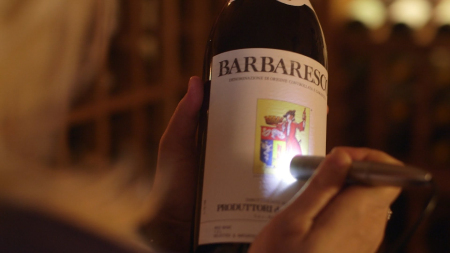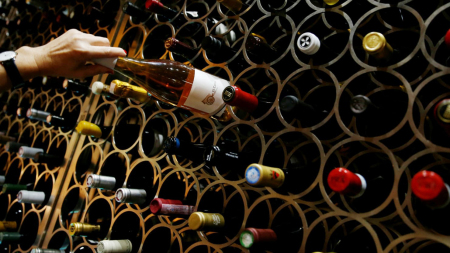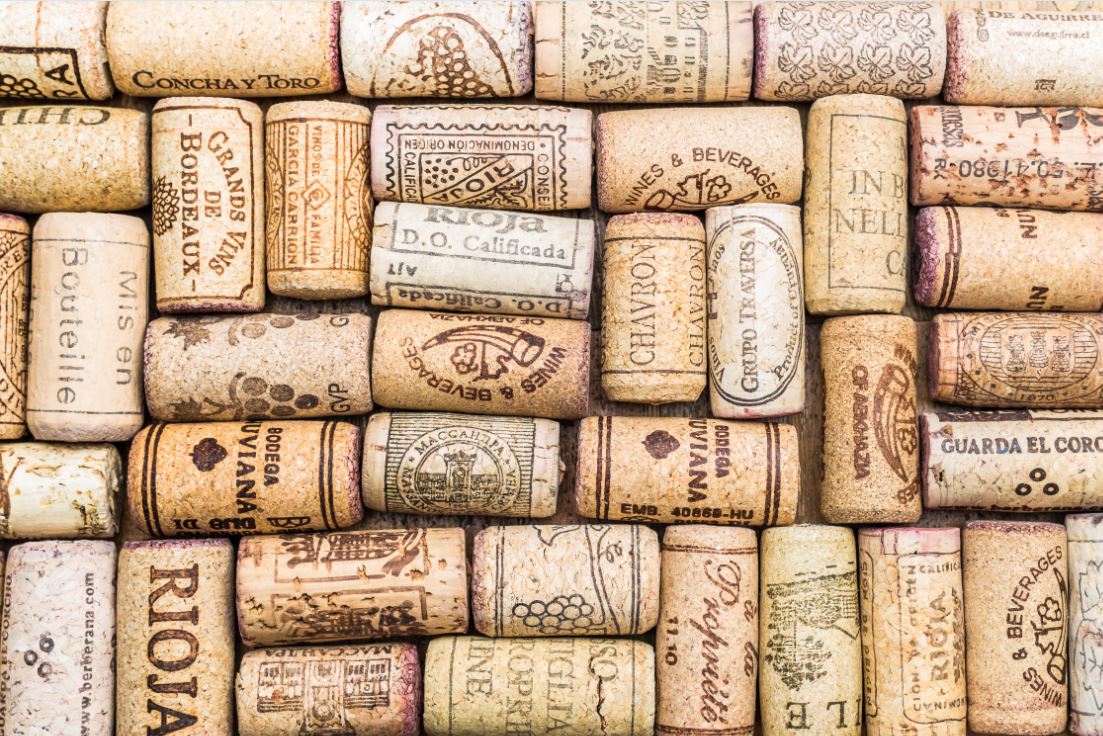The Future of Wine Anti-Counterfeiting
Advice from the Experts
葡萄酒打假,专家有话说
By Alex Bayntun-Lees, China IPR SME Helpdesk
 近年来,中国葡萄酒市场和消费快速增长。目前,中国已经成为世界主要的葡萄酒消费国。2017年,我国成为世界第一大葡萄酒消费国,这一排名反映出中国的葡萄酒消费者群体正在迅速壮大的事实。与此同时,消费者在选择葡萄酒时已经从过去单一的区分国产酒和进口酒,到区分来自哪个国家的哪个产区以及开始寻找最知名的酒庄,品质在中国消费者心目中的地位更为重要;而一批国产葡萄酒企业、酒庄也做出了高质量的个性化产品,得到了国内外的认可,这也对欧洲葡萄酒生产商构成了巨大的挑战。假冒红酒对市场和品牌名誉危害重大,防范伪劣假冒葡萄酒的出现就极具意义。
近年来,中国葡萄酒市场和消费快速增长。目前,中国已经成为世界主要的葡萄酒消费国。2017年,我国成为世界第一大葡萄酒消费国,这一排名反映出中国的葡萄酒消费者群体正在迅速壮大的事实。与此同时,消费者在选择葡萄酒时已经从过去单一的区分国产酒和进口酒,到区分来自哪个国家的哪个产区以及开始寻找最知名的酒庄,品质在中国消费者心目中的地位更为重要;而一批国产葡萄酒企业、酒庄也做出了高质量的个性化产品,得到了国内外的认可,这也对欧洲葡萄酒生产商构成了巨大的挑战。假冒红酒对市场和品牌名誉危害重大,防范伪劣假冒葡萄酒的出现就极具意义。
早在2011年,法国波尔多葡萄酒行业协会(Conseil Interprofessionnel du Vin de Bordeaux,以下简称CIVB)就一直对中国超市和葡萄酒商店出售的葡萄酒进行随机抽检,以建立一份假酒数据库。当时,法国曾就关于承认波尔多的专属葡萄酒产地称号与中国进行洽谈,经过四年的努力,中国终于承认“Bordeaux”波尔多葡萄酒的产地品牌,也藉此成为由法律认定并受保护的地理标志。协会亚太区负责人Thomas Jullien在中国参加活动时就曾表示,“对我们来说,被中国政府认可是相当重要的。要知道在法国也有香槟、干邑不同种类葡萄酒,他们都有原产地保护,却都未得到中国政府的承认。我们波尔多是第一个,也是非常罕见被中国政府承认的原产地保护。这证明我们不仅受到政府认可,也是市场认可的结果,我们非常看重”。
但全球红酒产地广泛,仅靠一两个如CIVB这样的组织不足以完全杜绝侵权犯罪的发生。经验丰富的诉讼人Paolo Beconcini博士认为,葡萄酒行业与中国品牌保护委员会 (QBPC)联合打假可以有力重挫假酒制造商,此外,充分发挥中国知识产权法律体系的作用,严惩大规模制假售假商贩,并向社会宣传其危害及影响,震慑潜在制假罪犯,也是可取途径之一。
中国葡萄酒繁荣对每个业内人士都是利好消息,但严控假货流入市场,维护合法权益,尚需多方合作,才能保护消费者食品安全。
 Wine counterfeiting in China is at a critical stage for the European wine industry. In recent years we have had a taste of what Chinese consumption means to the European producers, with over a quarter of a billion litres of European wine consumed annually by what represents only a fraction of the potential market in China. As the market moves from commodity and gift wines to drinking ‘table’ wine, so do the counterfeiters, flooding supermarkets and restaurants with wines bearing (often validly registered) appellation marks which have no connection to the liquid inside the bottle.
Wine counterfeiting in China is at a critical stage for the European wine industry. In recent years we have had a taste of what Chinese consumption means to the European producers, with over a quarter of a billion litres of European wine consumed annually by what represents only a fraction of the potential market in China. As the market moves from commodity and gift wines to drinking ‘table’ wine, so do the counterfeiters, flooding supermarkets and restaurants with wines bearing (often validly registered) appellation marks which have no connection to the liquid inside the bottle.
Chinese palates are at a crucial developmental stage, and exposure to poor quality counterfeits of European wine not only damages profits, but also poisons the reputation of European producers in the Chinese marketplace. Competition with domestic producers is already fierce, and Europe’s wine industry can no longer afford to stand by and let this threat go unchallenged.
 At the same time, producers do not stand alone in the fight against counterfeiting, and national agencies such as INAO, as well as regional regulatory bodies such as the CIVB are in working to register GIs and combat the most obvious fraudsters. These two organisations are a minority however, and their pockets alone are not deep enough to fund a comprehensive campaign. Without support of more organisations, and ultimately the producers they serve, they can only do so much to slow the poisonous effects of counterfeiting in China.
At the same time, producers do not stand alone in the fight against counterfeiting, and national agencies such as INAO, as well as regional regulatory bodies such as the CIVB are in working to register GIs and combat the most obvious fraudsters. These two organisations are a minority however, and their pockets alone are not deep enough to fund a comprehensive campaign. Without support of more organisations, and ultimately the producers they serve, they can only do so much to slow the poisonous effects of counterfeiting in China.
Enforcement expert Thomas Jullien and his team have worked for years for the CIVB to combat counterfeiting through traditional IPR protection, focussing on GI registration and enforcement to protect as many producers as possible under these invaluable collective marks. They have struggled however, with the lack of knowledge of wine and wine counterfeiting which is common amongst officials in China’s 2nd and 3rd tier cities and have struggled to persuade reluctant officers to shut down even relatively large scale infringers.
Experienced litigator Dr. Paolo Beconcini tells us that this is a problem which can be remedied, provided that the wine industry appoints representatives to attend working groups with committees such as the Quality Brands Protection Committee of China (QBPC), and Interpol’s China and South-East Asia Trafficking of Illicit Goods and Counterfeiting Sub-directorate. These groups, among others, provide industry representatives with an effective platform from which they can address enforcement officials and educate them on how best to recognise genuine products and identify counterfeits in their respective jurisdictions, thereby ensuring greater chances of cooperation and increasing the chances of independent action.
 Dr. Beconcini also advocates a more direct approach to dealing with larger infringers, bringing to bear the full weight of the Chinese IPR legal system, bulked out by Beijing’s enthusiasm to tackle food and beverage counterfeits. For long term success, large scale counterfeiters should be made example of, with litigators seeking the greatest penalties and the greatest publicity, thereby sending a message to would-be infringers that such actions will not go unpunished.
Dr. Beconcini also advocates a more direct approach to dealing with larger infringers, bringing to bear the full weight of the Chinese IPR legal system, bulked out by Beijing’s enthusiasm to tackle food and beverage counterfeits. For long term success, large scale counterfeiters should be made example of, with litigators seeking the greatest penalties and the greatest publicity, thereby sending a message to would-be infringers that such actions will not go unpunished.
Other experts, such as Nick Bartman have offered alternative solutions which take advantage of China’s continual development and strengthening of consumer protection laws. A spate of food and beverage scandals in recent years has led to the rapid development of a competent, reactive enforcement authority which can operate independently of producer instruction, requiring only proof of mislabelling of bottles and intent to mislead consumers as to the origin and quality of the products in question. The genius of this method lies in its simplicity, requiring only a letter of complaint (ideally drafted by a qualified legal professional) to the local enforcement bureau, after which the investigation and prosecution will be dealt with entirely by local officials.
As Bartman points out however, selling wine in China is not just about filling orders and shipping products, it is a complete project. With the level sophistication displayed by the now well established counterfeiting industry, it is important for the wine industry as a whole to remain vigilant, monitoring the market for counterfeit products and reacting intelligently and effectively against threats to their collective interests.
What all our experts agree on however, is that all efforts to combat infringement are hindered at present by the lack of concrete data of the situation on the ground. I myself would be hesitant to instruct experienced businesses or legal professionals, but from the information and opinions gathered over the course of this series, it seems that lack of data has paralysed the wine community, members of which are unwilling to commit resources without concrete evidence of the damage caused by counterfeiting.
Of course, this is by no means a simple task, the expertise exists, in organisations such as Wine Intelligence and other experienced industry research bodies capable of delivering comprehensive market reports . With the European wine industry losing traction in the Chinese market, a first step needs to be made, whether or not this is it, the European wine industry needs to cooperate, step up, and take the fight to the infringers who threaten their livelihoods, as well as the safety of their customers.